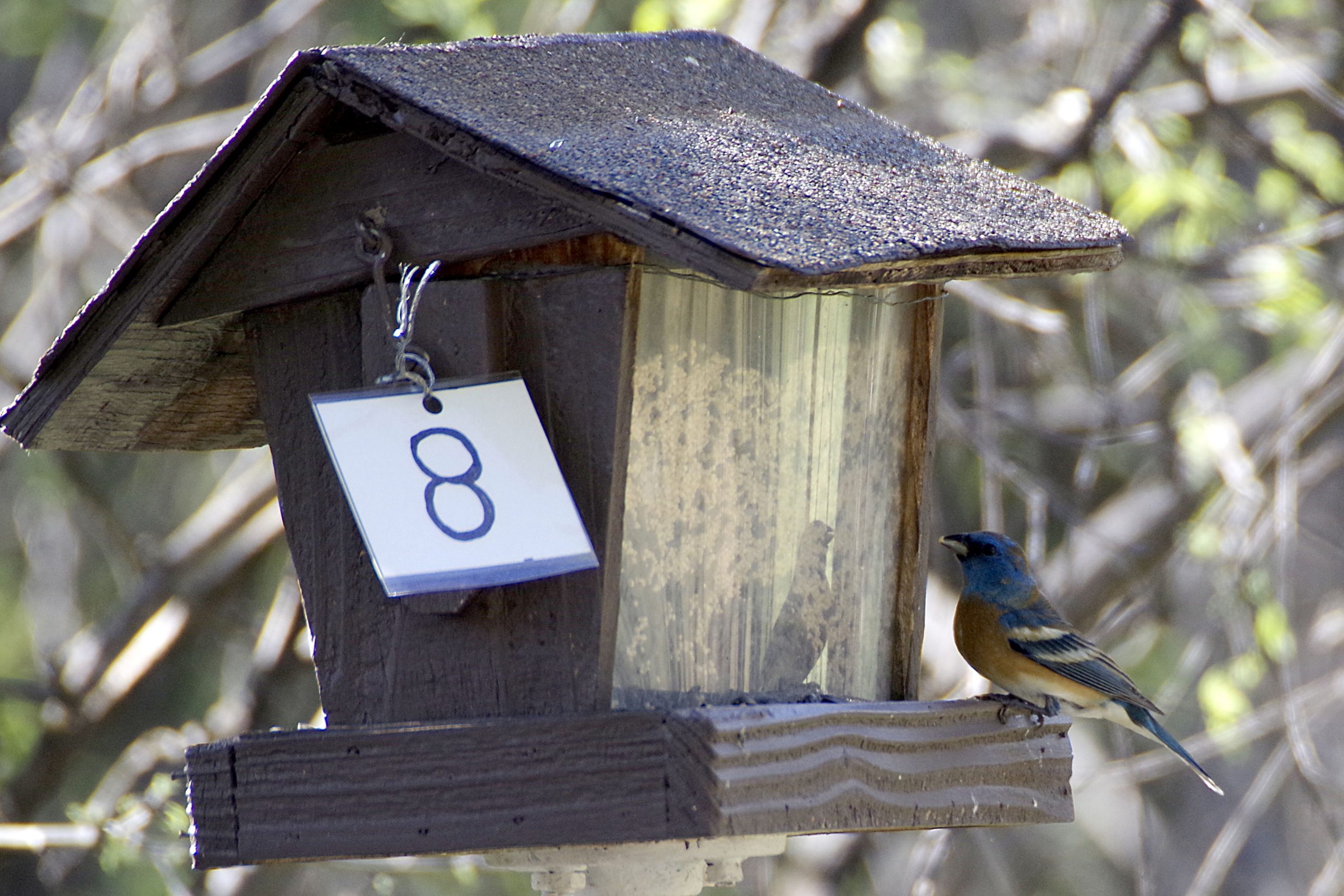Learn
by Maya Rappaport
Happy September! I love this month. The air smells crisper, and birds in migration begin to pass through our yards and favorite outdoor places. This month, I want to highlight a migratory species, the Lazuli Bunting.
The Lazuli Bunting is named for the male’s gorgeous lazuli blue coloring. He shines brilliantly in summer, with a whole host of different hues of light blue that catch the light, and a buffy reddish breast that provides brilliant contrast. The female is a beautiful warm buffy color with darker wings & tail. Seen together, the pair is a perfect balance of colors and tones. Their bright blues, shadowy greys, and warm oranges and pinks conjure up images of the shining summer skies and riverside wildflowers and vegetation of the Verde Valley.
It’s interesting to note the tendencies that birders have to discuss the male before the female. He is always the standard, she is always his foil. I want to challenge that (even though I began my first paragraph while settling into the old ways!). Have you ever thought about why male birds are so colorful, and female birds are so often less brightly colored?
Female birds pick their mates, who display potential parental ‘fitness’ through their coloration, vocalizations, and behaviors. Male birds have to be beautiful, showy, and loud to attract the attention of female birds. The evolution of coloration in birds is driven almost entirely by female selection. I find it fascinating that we often lean into the tendency to overlook female birds, to use the male bird as the “standard” and the female the “deviation”, when so much of what makes birds the way they are is determined by female choice. How would the modern field of birding be different if we focused as much or more attention on the females of beautiful species? The field of birding used to assert that female birds didn’t sing, and so many birders would assume that if a bird was singing, it was a male. Recent studies have entirely disproven that. What data is missed and what revelations are stymied when we hyper-fixate on only the males of a species? And how is this pattern a reflection of our larger society and the ways in which we interact with the natural world?
Lazuli Buntings are a riparian species, making their homes in the riverside corridors of Western North America. They overwinter in Western Central America. The Lazuli Buntings you see along the Verde River in summer are breeding birds, raising their young off the abundant insects generated by the Verde River and its tributaries. However, the Verde Valley is also a migratory corridor for this species, which tends to breed in larger densities further north. So, is the bunting you saw this week a breeding adult, a fledged bird born this year, or a migrant passing through en route to warmer grounds? Any of these options are possible! Learn more about identifying this species, and about its life history, here: https://www.allaboutbirds.org/guide/Lazuli_Bunting






